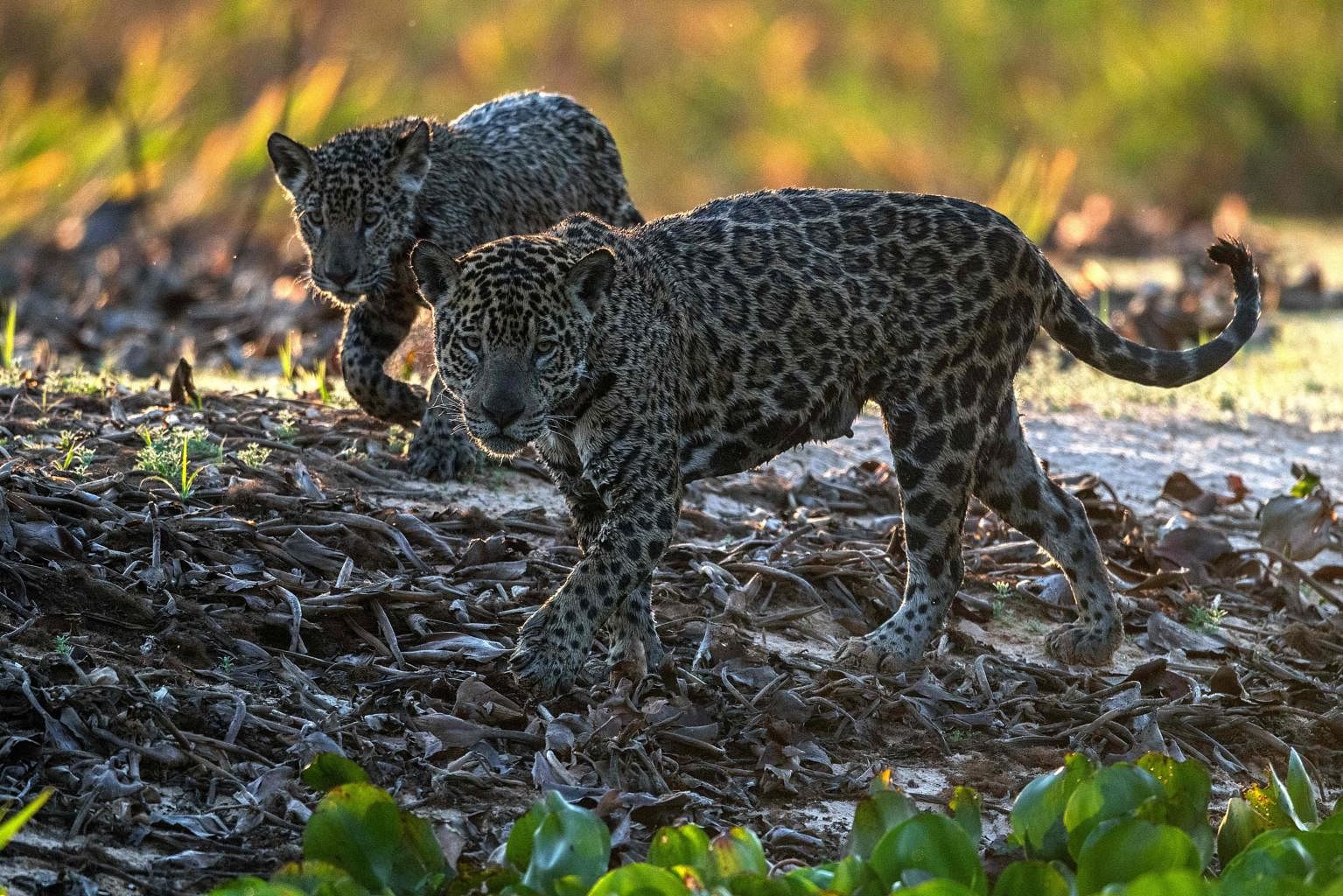PÔRTO JOFRE, BRAZIL (AFP) – Boating slowly upriver through the Pantanal, the world’s biggest tropical wetlands, Brazilian biologist Fernando Tortato scans the bank for signs of Ousado, a jaguar badly burned in devastating wildfires last year.
A thousand kilometres to the north, at the rapidly receding edge of the Amazon rainforest, conservationist Roberto Eduardo Stofel peers through his binoculars, monitoring a baby harpy eagle sitting alone in a giant nest, its parents apparently out searching for increasingly hard-to-find food.
The sleek, majestic jaguar and spectacularly powerful harpy eagle are two of the most iconic species threatened by the accelerating destruction of the Amazon, whose breathtaking biodiversity risks collapsing as the world’s biggest rainforest approaches a “tipping point”.
Scientists say that is the point at which a vicious circle of deforestation, wildfires and climate change could damage the rainforest so badly it dies off and turns to savannah – with catastrophic consequences for its more than three million species of plants and animals.
The jaguar and harpy eagle are already feeling the impact.
Ousado, a four-year-old, 75-kg male, was wounded a year ago when wildfires tore through the Pantanal, fueled by the region’s worst drought in 47 years.
The region, which sits just south of the Amazon, is known for its stunning wildlife, drawing tourists from around the world.
But nearly a third of it burned in last year’s fires, killing or wounding countless animals – including Ousado, who was found with third-degree burns on his paws, barely able to walk.
Veterinarians took the big black-and-yellow spotted cat to an animal hospital, treated him, and then reintroduced him to the wild with a tracking collar to monitor his recovery – which is going well.
Flying rivers
The destruction of the Pantanal, Tortato explains, is directly linked to that of the Amazon.
The rainforest’s 390 billion trees generate water vapour that dumps rain across much of South America – a phenomenon known as “flying rivers.”
Sometimes appearing as wisps of mist streaking skyward, then gathering into giant clouds that look like streams of cotton, these “rivers” likely carry more water than the Amazon River itself, scientists say.
As humans raze the forest for farms and pastureland, “the rainfall that would normally arrive in the Pantanal via the ‘flying rivers’ has diminished,” says Tortato, 37, of conservation group Panthera.
Classified as “near threatened”, the jaguar, the biggest cat in the Americas, has its stronghold in the Amazon.
Its population declined an estimated 20 to 25 per cent over the past two decades.
Known for its massive size, fearsome claws and tufts of feathers protruding Beethoven-like from its head, the harpy eagle is, like the jaguar, an apex predator in the Amazon.
Weighing up to 10kg, harpies scope their prey from the canopy, and then swoop in with deadly precision, snatching monkeys, sloths and even small deer.
But despite their hunting prowess, they are at risk of starvation.
It takes the gray and white eagles, which mate for life, about two years to raise their young.
They fledge just one eaglet at a time, but need enormous territory to hunt enough food.
A recent study found harpy eagles are not adapted to hunt for prey outside the forest, and cannot survive in areas with more than 50 per cent deforestation – increasingly common at the Amazon’s edges.
“They are at high risk of extinction in this region because of deforestation and logging,” says Stofel, 43, who works on a harpy conservation programme in Cotriguacu, in Mato Grosso state.
The area sits on the so-called “arc of deforestation”.
In a poignant snapshot of the harpy’s plight, AFP journalists saw one eagle eating food set out for it by conservationists, against the backdrop of a logging truck hauling giant tree trunks from the forest.
“We’ve monitored nests where the eaglets starved to death because the parents couldn’t hunt enough food,” Stofel says.
For Cristiane Mazzetti of environmental group Greenpeace, it is crucial to protect the Amazon’s threatened biodiversity – and not just for the plants and animals’ sake.
Nature’s complex interlocking web plays an essential role in the planet’s ability to provide food, oxygen, clean water, pollination and myriad other “ecosystem services” on which all life depends.
“Biodiversity isn’t something that can be resuscitated,” says Mazzetti. “It’s important to protect it for our own survival.”
Join ST’s Telegram channel here and get the latest breaking news delivered to you.
Source: Read Full Article







